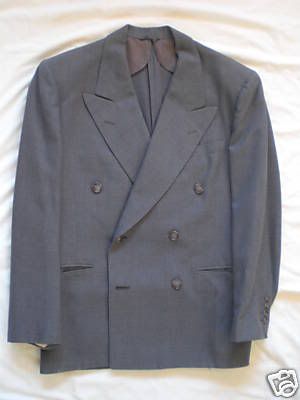Gentlemen,
How do you folks go about dating a suit when viewing one on eBay? Are there guides for this? Is a peaked lapel a good indicator of the 'right' vintage (i.e. 30's & 40's)?
For example, what vintage do you think this is?

While it will be interesting to know the specific vintage of this suit, the question is more of a general suit or sportcoat dating query.
Cheers,
- SteveN
How do you folks go about dating a suit when viewing one on eBay? Are there guides for this? Is a peaked lapel a good indicator of the 'right' vintage (i.e. 30's & 40's)?
For example, what vintage do you think this is?

While it will be interesting to know the specific vintage of this suit, the question is more of a general suit or sportcoat dating query.
Cheers,
- SteveN




